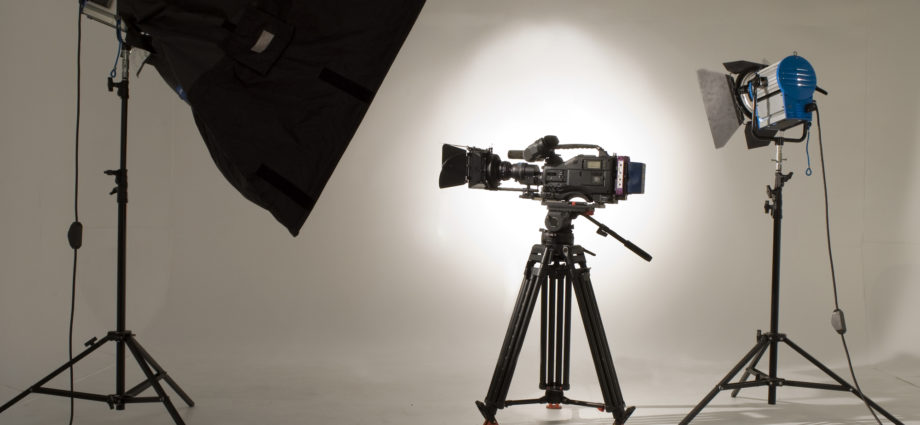Choosing which Documentary filmmaking equipment to buy can be difficult for beginning filmmakers. So we’ve assembled a list of resource articles that can help you get started. Check out this list of buying guides for film and video gear:
Professional video cameras for filmmaking
Although some surprisingly good films have been made on cell phones these days, you’re swimming upstream if you don’t use at least reasonably good quality video cameras to record your film. Beyond just quality, video cameras also have lots of features that camcorders don’t have, like manual exposure controls, white balance, more powerful zooms, image stabalization, and interchangable lenses for high quality shallow depth of field shooting that can make your documentary film feel “cinematic.”
• See this list of the best cameras for documentary film to help pick out which pro video camera might suit your needs.
• To support your camera, you’ll need a tripod for video, not a still photo tripod. Tripods for video distinguish themselves because they have fluid heads but you’ll also have to choose whether you want a traditional pan and tilt tripod, or if you want instead a ball head joint tripod. You may also decide you’re traveling a lot so you need a lightweight tripod for travel. Furthermore, you may want to get a tripod case to hold your tripod if you’re traveling with it or want to protect it.
• Capturing good quality video is largely about getting good lighting, and so you’ll want to choose carefully what kind of video lighting kit you want to use. In particular, consider an interview lighting kit.
• You may have a use for a small action camera as part of your filmmaking process. Check out this GoPro comparison guide and cheap GoPro alternatives too. You may also want to check out a sports video camera for specialized shooting of fast action.
• The best low budget documentary film video cameras
• You can use an external recorder to capture high quality video output from a professional video camera via an HDMI or SDI output port on some high end filmmaking cameras.
Microphones for film and video
Capturing good sound for a documentray can be challenging because you might find yourself recording in environments that are loud or have background sounds. If you choose the right sound gear you may still be able to record clean sound (especially using highly directional shotgun microphones and lavalier microphones). Check out these sound for film resources below:
• Boom mics are shotgun microphones that are suspended from boom poles (The best boom poles for indie filmmakers)
• The best shotgun mics capture highly directional sound, discarding off-axis background noise which is especially helpful to documentary filmmakers who often deal with recording sound in environments that are not quite as clean audio-wise as Hollywood film sets.
• If you shoot video with a DSLR you’re probably familiar with how poor quality the on-board microphones that come with these cameras are. Luckily you can use a DSLR mic that attaches to it to capture superior sound. The best DSLR microphones will reduce background noise. DSLR shotgun mics often attach directly to the camera on top of their hotshoe mounts, while lavalier microphones for DSLRs will allow you to attach a tiny mic to an interview subject and wirelessly connect to your camera.
• Best Wireless Lavaliere Microphones for Documentary Film
• What are the Best Voiceover Microphones for Narration?
• The Complete Microphone & Audio For Film/Video Guide
Film post-production gear
Editing and post-production can be one of the most challenging parts of the documentary filmmaking process. Sometimes you’re struggling to overcome not getting enough footage on set, sometimes you might be having difficulty making low quality footage look better. Here are some resources to consider for the post production process of documentary filmmaking:
• Of course if you shoot a lot of footage you’ll probably need a hard drive for video editing. The absolute best external hard drive for video editing are often very large capacity drives that also spin–operate– very fast (or are sometimes solid state disks that don’t spin at all).
• The best headphones for video editing are high quality, comfortable headphones, not earbuds. Surprisingly, good headphones for video editing actually don’t cost a fortune, either!
• You’ll probably need music for video editing. Check out a stock music subscription service like the one described in this Audioblocks review.
• For editing your film, you’ll need some documentary film software.
• For film festival strategy you may want to read a book or some articles.
Other documentary filmmaking educational resources
• If you want to do some research about how to make a documentary film, you could certainly do worse than reading some documentary books or looking into the best documentary film schools. See also this article about low budget documentary filmmaking.
• How to sell a film online using streaming distribution services
• Learn about how to write a documentary film script
• Documentary film tutorials & how to guides
• How to mic an interview (and this article on interview microphones)
• Check out some funny documentaries for inspiration.
If all that wasn’t enough, you can also read the The Complete Documentary Filmmaking Equipment List.
